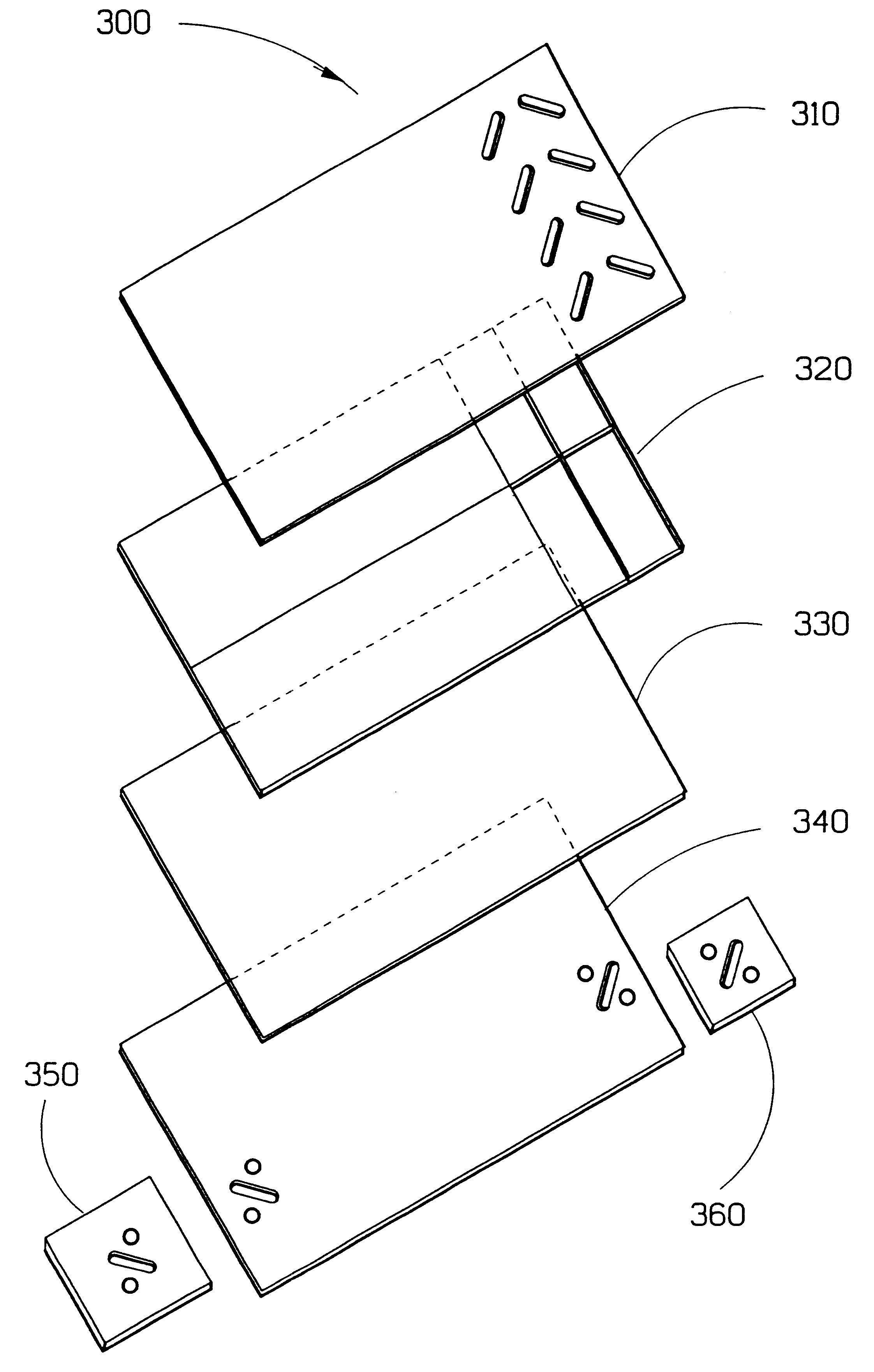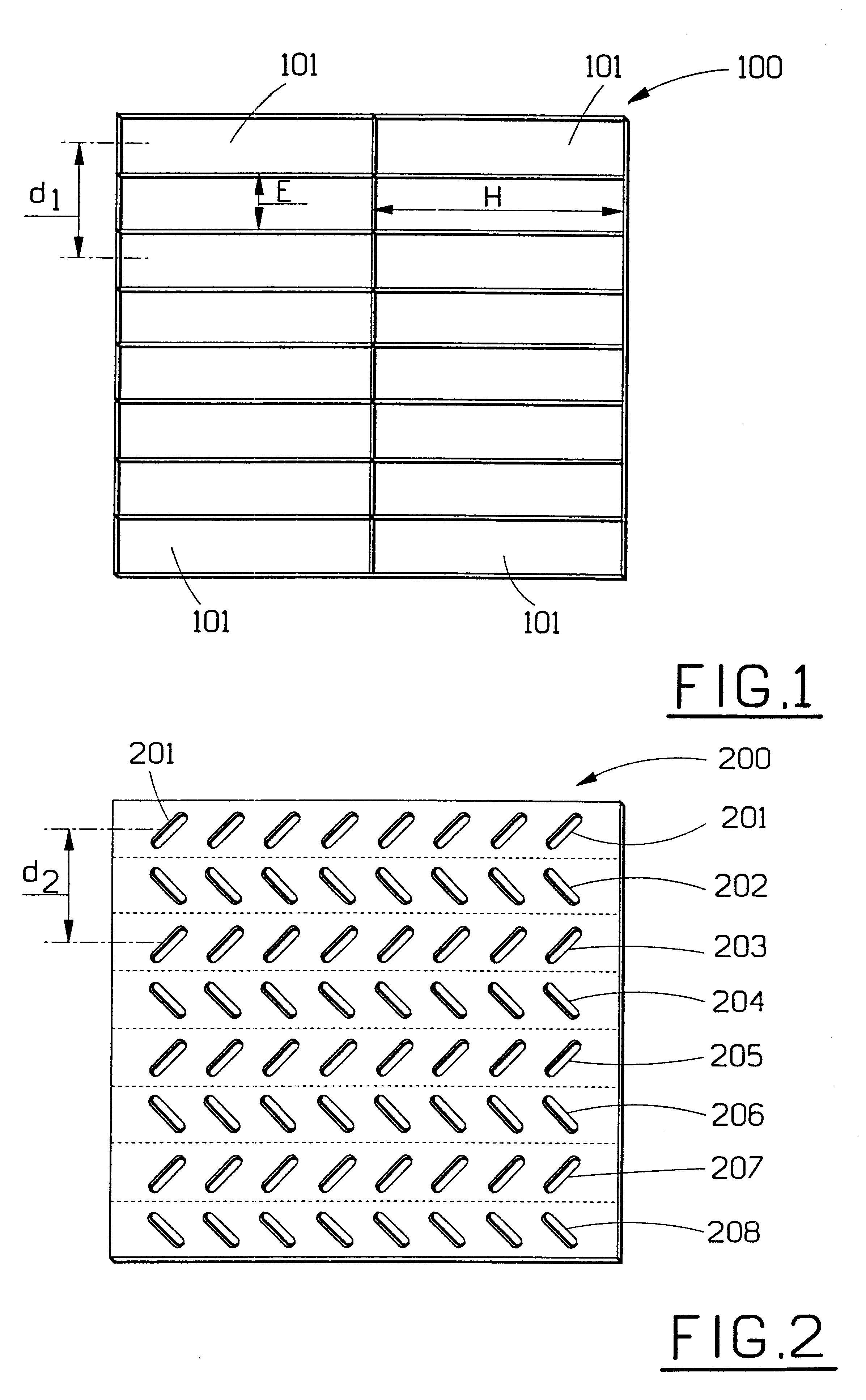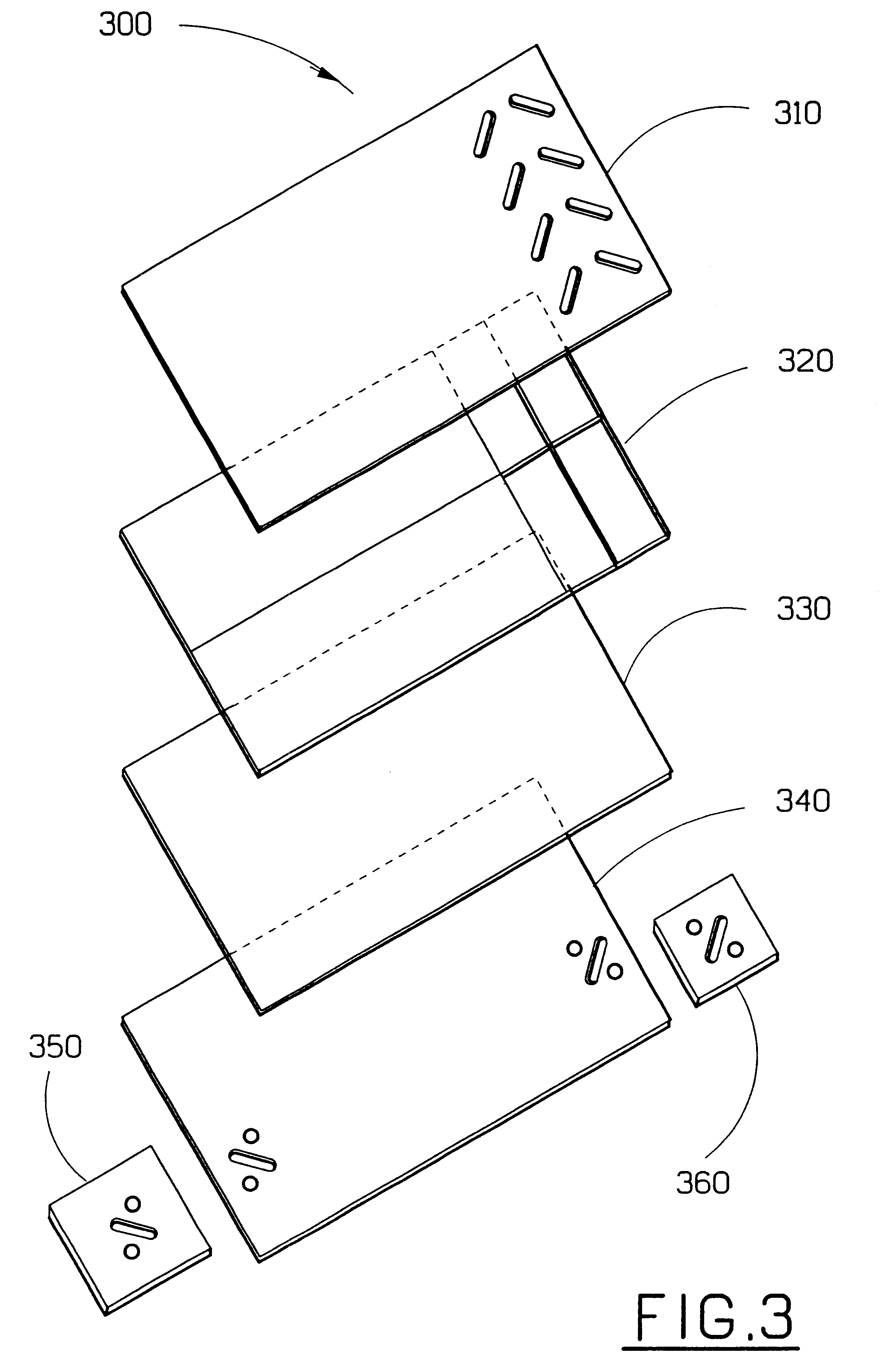Arrangement for use in an antenna array for transmitting and receiving at at least one frequency in at least two polarizations
- Summary
- Abstract
- Description
- Claims
- Application Information
AI Technical Summary
Benefits of technology
Problems solved by technology
Method used
Image
Examples
Embodiment Construction
The problem which is solved by the present invention is thus to be able to make a dual-polarized antenna array which is small and compact, inexpensive to produce and has small or negligible grating lobes.
This problem is solved with the aid of an arrangement for use in an antenna array for transmitting and receiving at at least one frequency in at least one first and one second polarization, which comprises at least two antenna elements, where each antenna element is intended for one of the two polarizations, with the antenna elements being arranged in a feeding structure which conducts electrical signals to and from the antenna elements. The feeding structure comprises a number of waveguides dimensioned for the said at least one frequency, and different waveguides are used for feeding antenna elements intended for different polarization. According to the invention, the waveguides are completely or partially filled with a material, the dielectric constant of which is higher than that...
PUM
 Login to View More
Login to View More Abstract
Description
Claims
Application Information
 Login to View More
Login to View More - R&D
- Intellectual Property
- Life Sciences
- Materials
- Tech Scout
- Unparalleled Data Quality
- Higher Quality Content
- 60% Fewer Hallucinations
Browse by: Latest US Patents, China's latest patents, Technical Efficacy Thesaurus, Application Domain, Technology Topic, Popular Technical Reports.
© 2025 PatSnap. All rights reserved.Legal|Privacy policy|Modern Slavery Act Transparency Statement|Sitemap|About US| Contact US: help@patsnap.com



